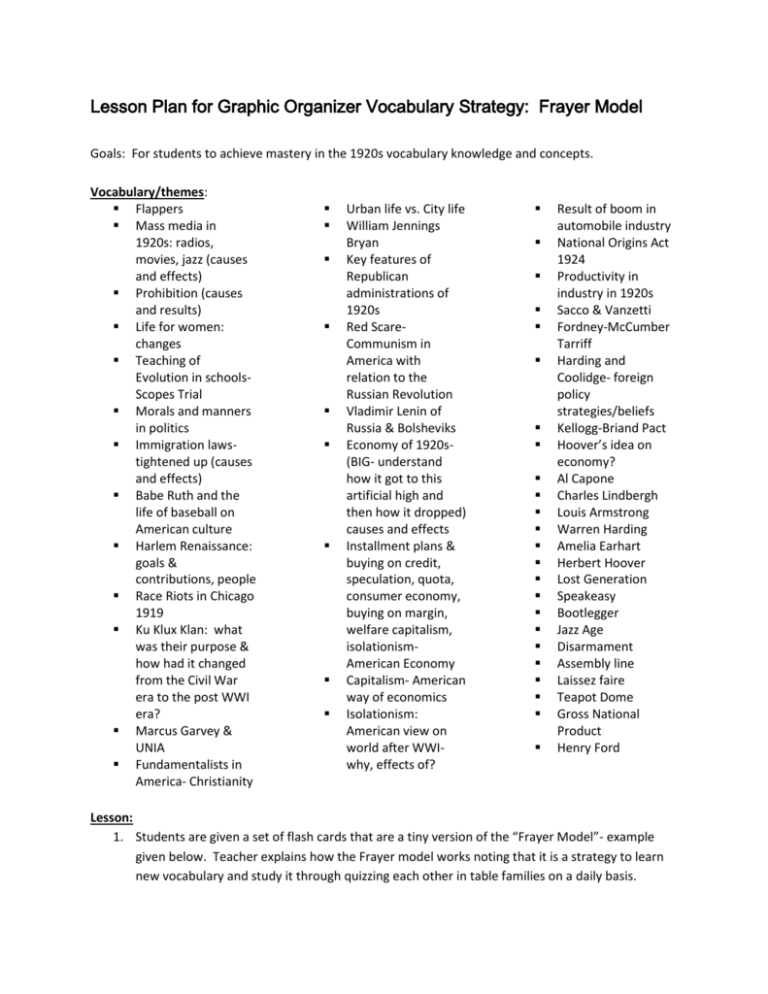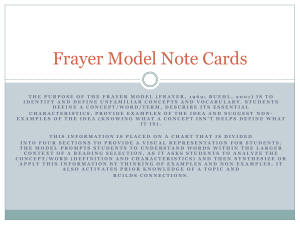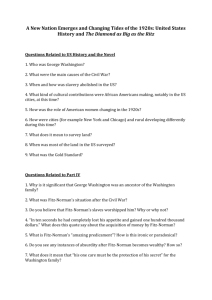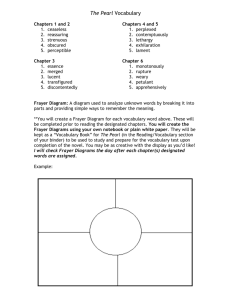File
advertisement

Lesson Plan for Graphic Organizer Vocabulary Strategy: Frayer Model Goals: For students to achieve mastery in the 1920s vocabulary knowledge and concepts. Vocabulary/themes: Flappers Mass media in 1920s: radios, movies, jazz (causes and effects) Prohibition (causes and results) Life for women: changes Teaching of Evolution in schoolsScopes Trial Morals and manners in politics Immigration lawstightened up (causes and effects) Babe Ruth and the life of baseball on American culture Harlem Renaissance: goals & contributions, people Race Riots in Chicago 1919 Ku Klux Klan: what was their purpose & how had it changed from the Civil War era to the post WWI era? Marcus Garvey & UNIA Fundamentalists in America- Christianity Urban life vs. City life William Jennings Bryan Key features of Republican administrations of 1920s Red ScareCommunism in America with relation to the Russian Revolution Vladimir Lenin of Russia & Bolsheviks Economy of 1920s(BIG- understand how it got to this artificial high and then how it dropped) causes and effects Installment plans & buying on credit, speculation, quota, consumer economy, buying on margin, welfare capitalism, isolationismAmerican Economy Capitalism- American way of economics Isolationism: American view on world after WWIwhy, effects of? Result of boom in automobile industry National Origins Act 1924 Productivity in industry in 1920s Sacco & Vanzetti Fordney-McCumber Tarriff Harding and Coolidge- foreign policy strategies/beliefs Kellogg-Briand Pact Hoover’s idea on economy? Al Capone Charles Lindbergh Louis Armstrong Warren Harding Amelia Earhart Herbert Hoover Lost Generation Speakeasy Bootlegger Jazz Age Disarmament Assembly line Laissez faire Teapot Dome Gross National Product Henry Ford Lesson: 1. Students are given a set of flash cards that are a tiny version of the “Frayer Model”- example given below. Teacher explains how the Frayer model works noting that it is a strategy to learn new vocabulary and study it through quizzing each other in table families on a daily basis. 2. copy of the Frayer Model 3. Students are split into table families consisting of 6-8 students each. Each table family is given a Frayer model flash cards. There are 48 vocabulary words/concepts so students are assigned for each table family approximately six vocabulary words. Students then complete a flash card about that particular vocabulary word(s) assigned. If students finish with their cards/vocabulary words, they then help other members who are not finished --working cooperatively to come up with definitions, examples, facts, & non-examples for that vocabulary word. When this initial activity is completed each table family cooperative group will have a set of flashcards to study for the vocabulary words for the 1920s unit. 4. This first part (1-3 above) will take approximately 45 minutes or half a class period. Then, for the entirety of the unit, students will work together quizzing each other for the first 15 minutes of each class period. Overtime through studying the words and concepts, students will learn through the Frayer model and other graphic organizers the important vocabulary for unit 4, the 1920s.






